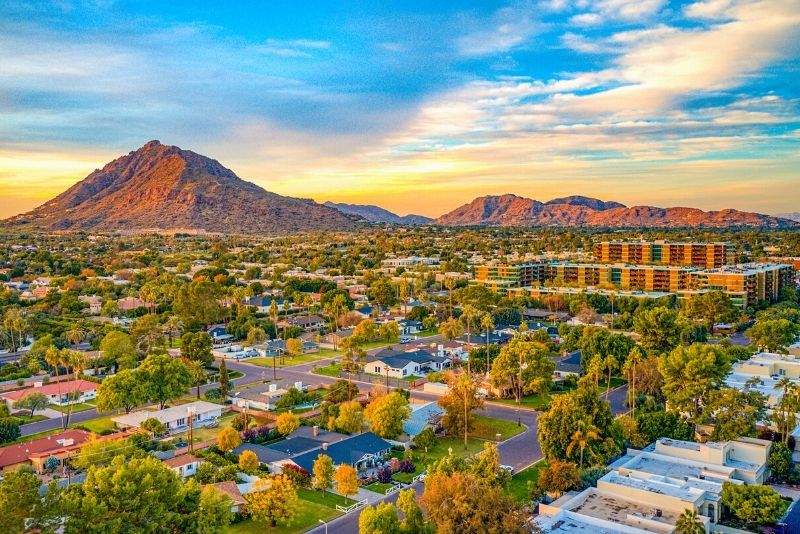Vehicular Traffic Flow and Traffic Light Management
Scottsdale’s approach to vehicular traffic flow and traffic light management is highly advanced. The city’s Traffic Management Center (TMC) uses real-time data from a network of cameras and sensors to monitor and control traffic throughout the city. This system allows for dynamic signal adjustment based on current traffic conditions, significantly reducing congestion and improving travel times.
Moreover, Scottsdale has implemented Adaptive Signal Control Technology (ASCT) across significant intersections. ASCT adjusts traffic lights in real-time to respond to traffic demand, reducing idle times and promoting smoother traffic flow. This not only helps reduce vehicle emissions but also enhances overall road safety.
Water Delivery and Wastewater Removal
Given its desert setting, water management is a critical component of Scottsdale’s urban planning. The city’s water delivery system relies on a combination of sources, including the Colorado River and local aquifers. Advanced water treatment facilities use state-of-the-art technology like reverse osmosis and ultraviolet light disinfection to ensure water safety and quality. Scottsdale’s water conservation initiatives are robust, featuring programs incentivizing residents to adopt water-efficient appliances and xeriscaping, thus significantly reducing per capita water usage.
Scottsdale operates modern treatment plants for wastewater removal. These plants purify wastewater to high standards and reclaim it for uses such as irrigation and industrial cooling. These practices demonstrate Scottsdale’s commitment to reducing freshwater use and promoting a circular economy.
Bulk Trash Pickup
Scottsdale’s bulk trash pickup service is essential to the city’s waste management strategy. It is designed to handle items too large for regular trash disposal, such as furniture and large yard waste. This service is scheduled yearly to prevent illegal dumping and reduce environmental impact. Notably, the city has integrated recycling efforts within the bulk trash system, sorting recyclable materials to minimize landfill use and support sustainability goals.
Solar-Powered Parking Structures
One of the innovative features of Scottsdale’s urban landscape is its investment in solar-powered parking structures. These facilities are equipped with solar panels that provide shade and generate electricity. This initiative helps reduce the urban heat island effect that is common in city environments while contributing to the city’s energy needs. The electricity generated supports the parking structures’ power requirements, including lighting and electric vehicle (EV) charging stations, thereby promoting the use of electric vehicles.
Sustainability Initiatives
Scottsdale’s commitment to sustainability is evident in various aspects of its urban planning. The city has made significant strides in integrating green building standards and promoting renewable energy usage. New developments are encouraged to incorporate sustainable design principles, such as energy efficiency, water conservation, and sustainable materials.
The city’s broader sustainability initiatives are a testament to the active role of its residents. Community programs educate and encourage residents to adopt more sustainable lifestyles, fostering a sense of empowerment and shared responsibility. From recycling and composting programs to community gardens and green transportation options, Scottsdale’s residents are actively engaged in sustainability practices, making them an integral part of the city’s success.
Conclusion
In 2024, Scottsdale, Arizona, stands as a beacon of urban planning and sustainability excellence. Through its innovative management of traffic, water, waste, and energy, Scottsdale not only addresses the immediate needs of its residents but also sets a forward-looking agenda for sustainable urban living. By continually investing in technology and infrastructure that reduce environmental impact while improving quality of life, Scottsdale inspires hope for a more sustainable and efficient urban environment for future generations to thrive in.






